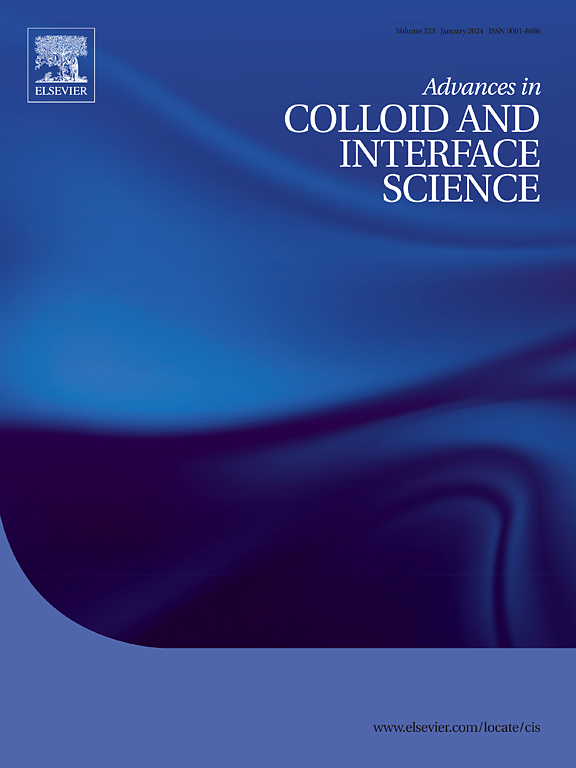Dynamic nanostructures at the surface of rising bubbles in amphiphile solutions: Comparison of low-molecular-weight surfactants and proteins
IF 15.9
1区 化学
Q1 CHEMISTRY, PHYSICAL
引用次数: 0
Abstract
The formation, stability, and decay of foams occur under dynamic conditions. Given their inherent complexity, an accurate description of these subprocesses necessitates an analysis of multiple factors, with a particular focus on the formation and structure of the adsorption layer. Single rising bubble techniques facilitate a deeper comprehension of the dynamics of diverse phenomena in foams, as they yield experimental data under dynamic conditions. This review examines the subtle differences in the dynamic adsorption structures of low-molecular-weight surfactants and proteins at the liquid/gas interface. These differences can significantly impact interfacial properties and potentially alter our understanding of the mechanisms behind the formation of the Dynamic Adsorption Layer (DAL). The primary techniques under consideration are local velocity profiles (LVPs) of single rising bubbles and dynamic fluid-film interferometry (DFI) of the thin liquid film formed at the collision of a bubble with a free liquid surface. We provide a summary of recent findings on the topic. Due to the limited availability of comprehensive datasets on proteins, our discussion is partially supplemented by newly obtained unpublished data. We highlight key differences in the behavior of bubbles in low-molecular-weight surfactant solutions versus protein solutions that have previously been overlooked in the literature. We explore their potential origins in the context of DAL dynamics and architecture.

求助全文
约1分钟内获得全文
求助全文
来源期刊
CiteScore
28.50
自引率
2.60%
发文量
175
审稿时长
31 days
期刊介绍:
"Advances in Colloid and Interface Science" is an international journal that focuses on experimental and theoretical developments in interfacial and colloidal phenomena. The journal covers a wide range of disciplines including biology, chemistry, physics, and technology.
The journal accepts review articles on any topic within the scope of colloid and interface science. These articles should provide an in-depth analysis of the subject matter, offering a critical review of the current state of the field. The author's informed opinion on the topic should also be included. The manuscript should compare and contrast ideas found in the reviewed literature and address the limitations of these ideas.
Typically, the articles published in this journal are written by recognized experts in the field.

 求助内容:
求助内容: 应助结果提醒方式:
应助结果提醒方式:


